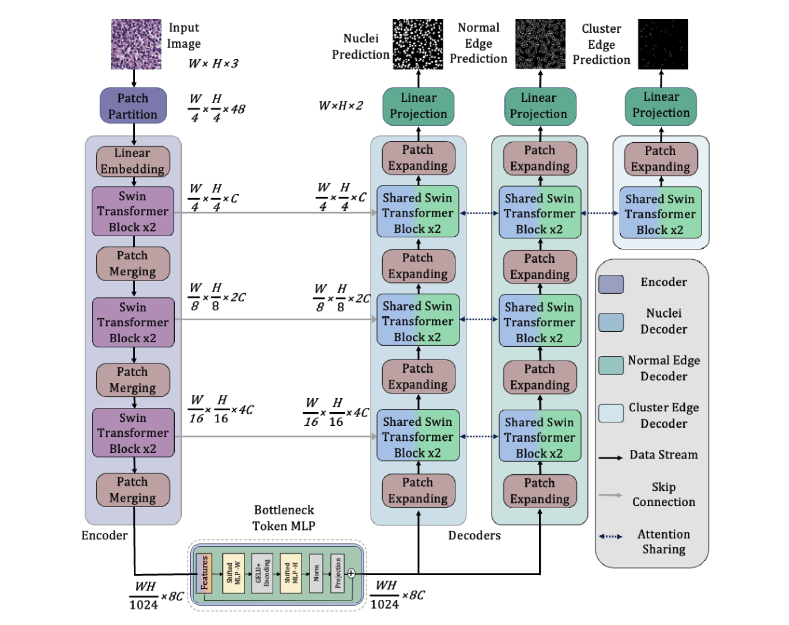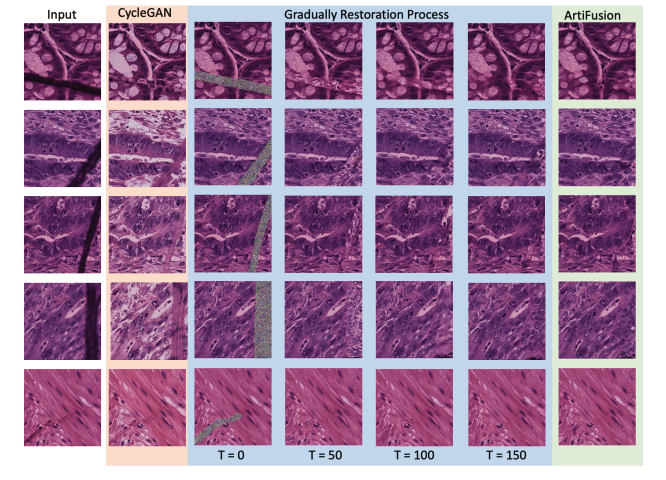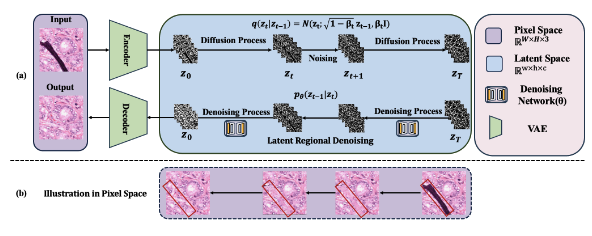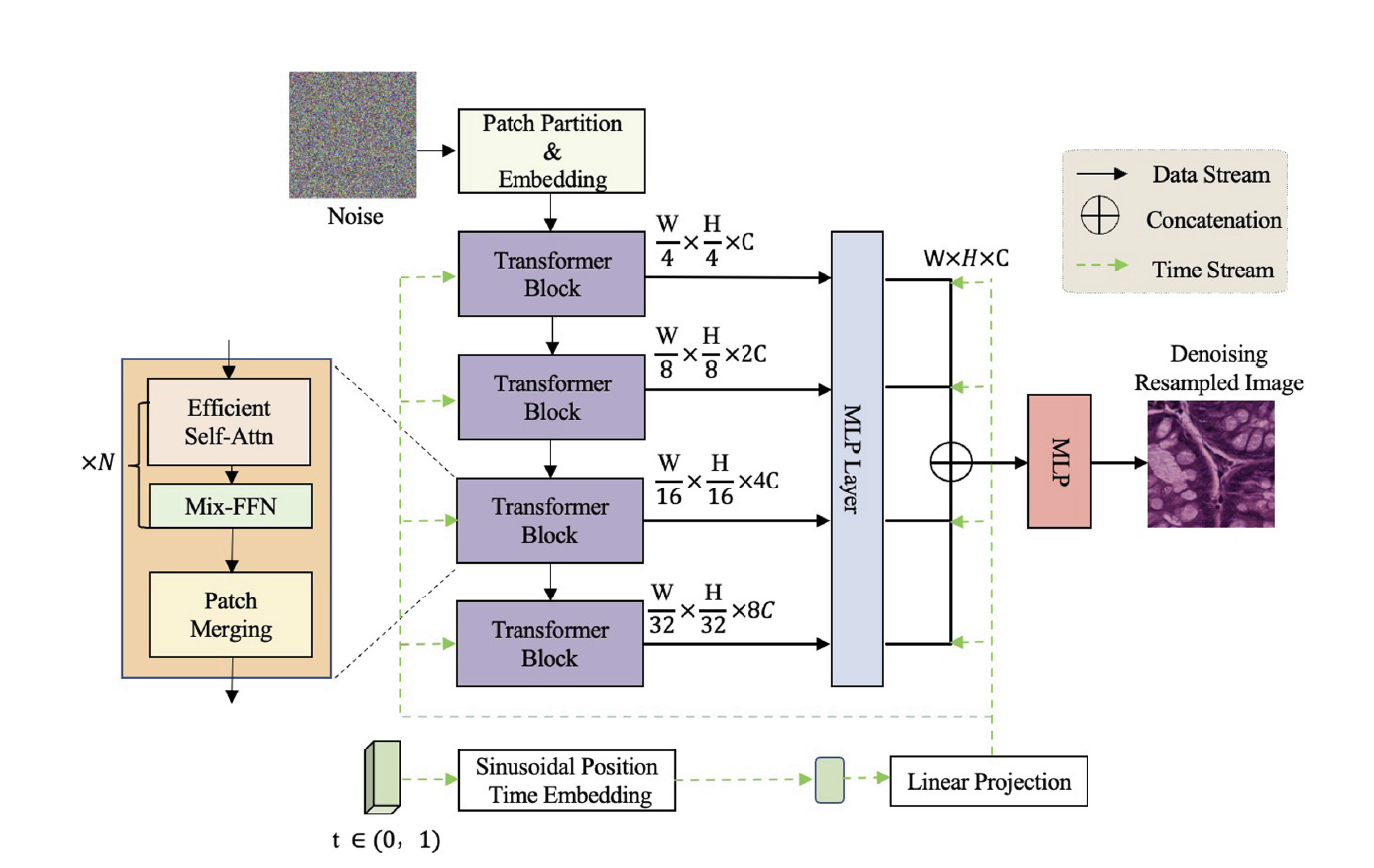Publications
TransNuSeg: A Lightweight Multi-Task Transformer for Nuclei Segmentation MICCAI 2023

This paper proposes a lightweight multi-task framework for nuclei segmentation, namely TransNuSeg, as the first attempt at an entirely Swin-Transformer driven architecture. Innovatively, to alleviate the prediction inconsistency between branches, we propose a self-distillation loss that regulates the consistency between the nuclei decoder and normal edge decoder. And an innovative attention-sharing scheme that shares attention heads amongst all decoders is employed to leverage the high correlation between tasks. [ paper] [ code ]
Artifact Restoration in Histology Images with Diffusion Probabilistic Models MICCAI 2023

This is the first attempt at a denoising diffusion probabilistic model for histological artifact restoration, called ArtiFusion. Specifically, ArtiFusion formulates the artifact region restoration as a gradual denoising process, and its training relies solely on artifact-free images to simplify the training complexity. Furthermore, to capture local-global correlations in the regional artifact restoration, a novel Swin-Transformer denoising architecture is designed, along with a time token scheme. Our extensive evaluations demonstrate the effectiveness of ArtiFusion as a pre-processing method for histology analysis, which can successfully preserve the tissue structures and stain style in artifact-free regions during the restoration.[ paper] [ code ]
LatentArtiFusion: an Effective and Efficient Histological Artifacts Restoration Framework DGM4MICCAI 2024

In this paper, we propose a novel framework, namely LatentArtiFusion, which leverages the latent diffusion model (LDM) to reconstruct histological artifacts with high performance and computational efficiency. Unlike traditional pixel-level diffusion frameworks, LatentArtiFusion executes the restoration process in a lower-dimensional latent space, significantly improving computational efficiency. Through extensive experiments on real-world histology datasets, LatentArtiFusion demonstrates remarkable speed, outperforming state-of-the-art pixel-level diffusion frameworks by more than 30×.[paper][code]
Histology Image Artifact Restoration with Lightweight Transformer Based Diffusion Model AIME 2024

In this paper, we propose a lightweight transformer based framework for histological artifacts restoration. In comparison to existing generative adversarial network (GAN) based solutions, our method minimizes changes in morphology while maximizing preservation of the stain style during the restoration of the artifact. By providing a more reliable and accurate restoration of artifact-affected areas, our model facilitates better analysis and interpretation of histological images, thereby potentially improving the accuracy of tumor diagnosis and treatment decisions. [paper] [code]
